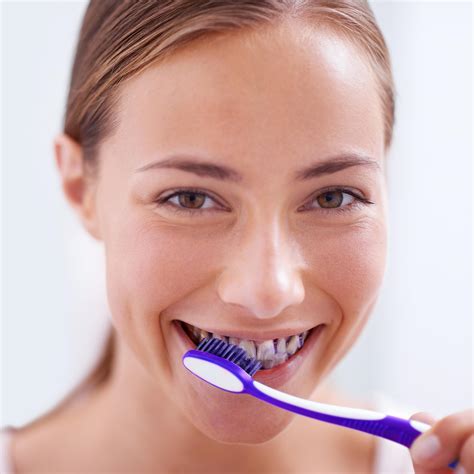Teeth Bleaching: Relieve Pain Fast

The quest for a dazzling smile has led many to explore the world of teeth bleaching, a cosmetic dentistry procedure designed to remove stains and discoloration from teeth, leaving them looking whiter and brighter. However, for some, the journey to a radiant smile can be marred by sensitivity and pain, particularly after the bleaching process. This comprehensive guide delves into the realm of teeth bleaching, focusing on the causes of pain, the methods to relieve it, and a thorough exploration of the teeth bleaching process itself, ensuring that readers are well-equipped with the knowledge to navigate this cosmetic procedure with confidence.
Understanding Teeth Bleaching
Before diving into the aspects of pain relief, it’s essential to grasp the fundamentals of teeth bleaching. Teeth bleaching is a chemical process that uses peroxide-based agents to lighten the color of teeth. The process can be administered in a dental office or at home using dentist-dispensed or over-the-counter products. In-office bleaching typically involves the application of a high-concentration bleaching agent to the teeth, often combined with a special light to enhance the effect. At-home bleaching, on the other hand, involves using a lower concentration of the bleaching agent over an extended period, usually through the use of custom-fitted trays or pre-formed trays and strips.
Causes of Pain and Sensitivity
Pain and sensitivity following teeth bleaching are common complaints, attributed primarily to the penetration of the bleaching agent through the tooth enamel and into the dentin, where the nerve endings are located. The peroxide in the bleaching agent can cause dehydration of the tooth, leading to increased permeability and sensitivity. Additionally, existing conditions such as gum recession, cracked teeth, or periodontal disease can exacerbate sensitivity during and after the bleaching process.
Relieving Pain and Sensitivity
Fortunately, there are several strategies to alleviate pain and sensitivity after teeth bleaching:
- Desensitizing Toothpaste: Using toothpaste specifically designed for sensitive teeth can help block the dentinal tubules and reduce fluid flow through the dentin, thus reducing sensitivity.
- Potassium Nitrate and Strontium Chloride: These are active ingredients found in some desensitizing toothpastes and can help alleviate sensitivity by blocking the nerve endings.
- Fluoride Gel: Applying a fluoride gel can help remineralize the teeth, reducing sensitivity.
- Pain Relief Medications: Over-the-counter pain relievers such as ibuprofen (Advil, Motrin) or acetaminophen (Tylenol) can help manage pain but should be used as directed and only when necessary.
- Avoiding Hot or Cold Foods and Drinks: Temporarily avoiding extreme temperatures can help minimize sensitivity.
Steps to Minimize Pain During the Bleaching Process
While some level of sensitivity may be unavoidable, there are steps you can take to minimize discomfort during the bleaching process:
- Follow Instructions: Adhere strictly to the guidelines provided with your bleaching product, whether it’s for at-home use or as directed by your dentist.
- Start with Lower Concentration: If using at-home products, consider beginning with a lower concentration of the bleaching agent and gradually increasing as needed and under professional guidance.
- Duration and Frequency: Limit the duration and frequency of bleaching sessions as recommended to avoid overexposure to the bleaching agent.
- Dentist Supervision: If possible, work closely with a dentist, especially for in-office bleaching, to monitor sensitivity and adjust the treatment plan accordingly.
Comparative Analysis of Bleaching Methods
When considering teeth bleaching, it’s crucial to weigh the pros and cons of different methods, including in-office professional bleaching, at-home bleaching with custom trays, and over-the-counter products. Each method has its advantages and disadvantages in terms of effectiveness, cost, convenience, and potential for sensitivity.
- In-office Bleaching: Offers immediate results and is supervised by a professional, minimizing risks. However, it can be more expensive and may involve higher concentrations of bleaching agents, potentially increasing sensitivity.
- At-home Bleaching with Custom Trays: Provides a balance between cost and effectiveness, with the supervision of a dentist. Sensitivity can be managed with the right concentration and usage.
- Over-the-counter Products: The most affordable option but may lack in effectiveness and can be risky if not used correctly, potentially leading to uneven bleaching and increased sensitivity.
Historical Evolution of Teeth Bleaching
The concept of teeth bleaching has evolved significantly over the years, from its early beginnings to the sophisticated, peroxide-based treatments of today. Understanding the historical context and development of teeth bleaching techniques can provide insights into the current methods and their potential improvements.
Future Trends Projection
As technology and dental research advance, we can expect the development of even safer, more effective, and potentially pain-free teeth bleaching methods. Innovations such as laser-assisted bleaching, nano-hydroxyapatite desensitizing agents, and more personalized approaches to bleaching based on individual tooth structure and sensitivity levels are on the horizon.
Technical Breakdown of the Bleaching Process
The bleaching process, whether in-office or at-home, involves several key steps and considerations, including the preparation of the teeth, the application of the bleaching agent, and the post-bleaching care. A technical breakdown of these steps can help individuals understand the process better and manage expectations regarding outcomes and potential sensitivity.
Myth vs. Reality: Separating Facts from Misconceptions
There are several misconceptions surrounding teeth bleaching, including its safety, effectiveness on all types of stains, and the notion that it can drastically change the appearance of one’s teeth overnight. Separating fact from fiction is crucial for individuals considering this cosmetic procedure, ensuring they have realistic expectations and are aware of the potential risks and limitations.
Decision Framework for Choosing the Right Bleaching Method
With the plethora of options available, choosing the right teeth bleaching method can be daunting. A decision framework that considers factors such as the severity of staining, budget, desired outcomes, and individual sensitivity can help guide the selection process, leading to a more informed and satisfactory decision.
Conceptual Exploration of Tooth Sensitivity
Tooth sensitivity, a common side effect of teeth bleaching, is a complex phenomenon involving the dentinal tubules, nerve endings, and the protective layers of the tooth. Exploring the conceptual underpinnings of tooth sensitivity can provide deeper insights into its causes and how it can be managed, both during and after the bleaching process.
Resource Guide for Further Information
For those seeking more detailed information or specific guidance on teeth bleaching and sensitivity management, the following resources can be invaluable: - American Dental Association (ADA) guidelines on teeth bleaching - Peer-reviewed articles on dental sensitivity and bleaching - Professional dental associations and their recommendations on cosmetic dentistry procedures
FAQ Section
How long does teeth sensitivity last after bleaching?
+Teeth sensitivity after bleaching is usually temporary and can last from a few days to a couple of weeks. In most cases, sensitivity diminishes significantly within 24-48 hours after the procedure.
Can I use teeth bleaching products if I have dental work such as fillings or crowns?
+It's generally recommended to consult with a dentist before using any teeth bleaching products, especially if you have dental work like fillings or crowns. Bleaching agents may not affect these materials in the same way as natural teeth, and their color may not change, potentially leading to uneven results.
How often can I bleach my teeth?
+The frequency of teeth bleaching depends on the method used and individual tooth sensitivity. Generally, it's recommended to wait at least 6 months between bleaching treatments to avoid overbleaching and potential damage to the tooth enamel.
In conclusion, while teeth bleaching can be an effective way to achieve a brighter, more confident smile, it’s crucial to approach the process with a thorough understanding of the potential for sensitivity and pain, as well as the methods to mitigate these discomforts. By being informed and taking the right precautions, individuals can navigate the world of teeth bleaching with confidence, ensuring a satisfying and safe experience.

